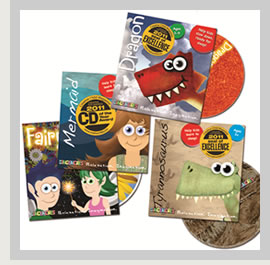|
|
||||||||||||||||||||||||||||||||||||||||||||||||||||||||||||||||||||||||||||||
|
||||||||||||||||||||||||||||||||||||||||||||||||||||||||||||||||||||||||||||||
| From baby to toddler talk | ||||||||||||||||||||||||||||||||||||||||||||||||||||||||||||||||||||||||||||||
| Help develop your child's speech | ||||||||||||||||||||||||||||||||||||||||||||||||||||||||||||||||||||||||||||||
|
Playground talk is rife. Conversations about when little Jimmy started walking or talking or deconstructing atoms is very stressful for parents who are worried their child is not developing as quickly as others. At the end of the day, they all develop at their own pace. Some walk early and talk early, some walk and talk late, but generally speaking they all arrive at the same place by the age of around three or four years old. There is a normal range for developmental milestones. Some kids need extra help with their speech and language just like some kids need extra help from glasses for their vision. Speech Pathology Australia recommends that by one year old, children should be able to say a few words and understand simple instructions like 'no'. By two children should be able to say and understand simple 2–3 word phrases like "milk all gone". Don't be afraid to admit your child needs help – because early intervention has the best outcomes for kids. Speech is a key issue in preschool, as parents worry about their children’s readiness to go to big school. Speech Pathologist, Sherene Alfreds, Founder of Dinosnores Sleepy Stories - Guided Relaxation for Kids is mother of one brilliant early-talking daughter and a wonderful late-talking son. Sherene is also this month’s Mum in Profile and has kindly donated some of her fabulous Dinosnores storybook CDs for our giveaway. Here she gives some tips on how to help your child develop from baby talk to toddler talk. Baby Talk to Toddler Talk And it is good to do this. Baby talk helps babies learn to communicate. We encourage babies to listen to us with our singsong baby talk. We encourage them to make eye contact and smile with our baby talk. And we encourage them to make sounds and babble, ready for those magical first words by using baby talk. When we use baby talk with babies we are using best teaching practice for language learning known for babies. But toddler talk is not so automatic for many grow ups including parents. Many parents continue to use baby talk with their toddler while others talk to their 2 year olds as if they were 37. Fortunately, toddlers are so predisposed learning communication they still can learn - but maybe not as fast as they could have. And when communication is frustrated those toddler tantrums are even more frequent and fierce. So what is toddler talk? Toddler talk is providing your toddler with models of language just one step ahead of what your child is currently producing. It involved identifying what language your toddler has. This is not really as daunting as it first sounds. Does your child use predominantly 1,2,3, or 4 word phrases? If your child is using one-word phrases still, then you need to use mainly 2 word phrases with him. If your child is on two-word phrases, model three-word phrases. And use lots of gesture and a slow rate of speech so your child can imitate. Here is an example of modeling two-word toddler talk, when a parent is dressing a toddler. The parent is modeling two and three word phrases for a child who uses mainly one word at a time.
Below is another example of a mother modeling three-four word utterance toddler talk at lunchtime with a toddler who uses two word phrases.
So give it a go with your toddler. You might feel silly at first. But if you consciously use toddler talk every time you dress, feed and play with your child, you will be helping your toddler’s language grow by using the best language teaching practices available. Main Tips for Toddler Talk
by See details below to go into our fabulous Dinosnores giveaway this month… and for more information on Dinosnores visit the website. |
||||||||||||||||||||||||||||||||||||||||||||||||||||||||||||||||||||||||||||||
|
Giveaway |
||||||||||||||||||||||||||||||||||||||||||||||||||||||||||||||||||||||||||||||
| Dinosnores Sleepy Stories | ||||||||||||||||||||||||||||||||||||||||||||||||||||||||||||||||||||||||||||||
|
Guided relaxation and meditation for kids - with stories! Designed by child care and child language experts, Dinosnores stories and soundscapes use relaxation and visualisation techniques to take kids on an imaginative journey, with calming vocal rhythms and soothing natural sounds. Each story runs for around 30 minutes, with a soundscape that lasts for a full hour - to make sure children stay asleep after settling.
We have four Dinosnores CD packs to give away. RRP $100.00 |
||||||||||||||||||||||||||||||||||||||||||||||||||||||||||||||||||||||||||||||
|
|
|||||||||

 The development of our babies and toddlers is always a major concern and it doesn't stop there… We worry about how our kids are doing pretty much all their lives. But the early years of development are particularly difficult, as we struggle to understand where our children should be in movement, articulation and of course speech and if they're having difficulty in any of the key areas.
The development of our babies and toddlers is always a major concern and it doesn't stop there… We worry about how our kids are doing pretty much all their lives. But the early years of development are particularly difficult, as we struggle to understand where our children should be in movement, articulation and of course speech and if they're having difficulty in any of the key areas. Dinosnores sleepy stories help children slow down, ready for sleep.
Dinosnores sleepy stories help children slow down, ready for sleep.